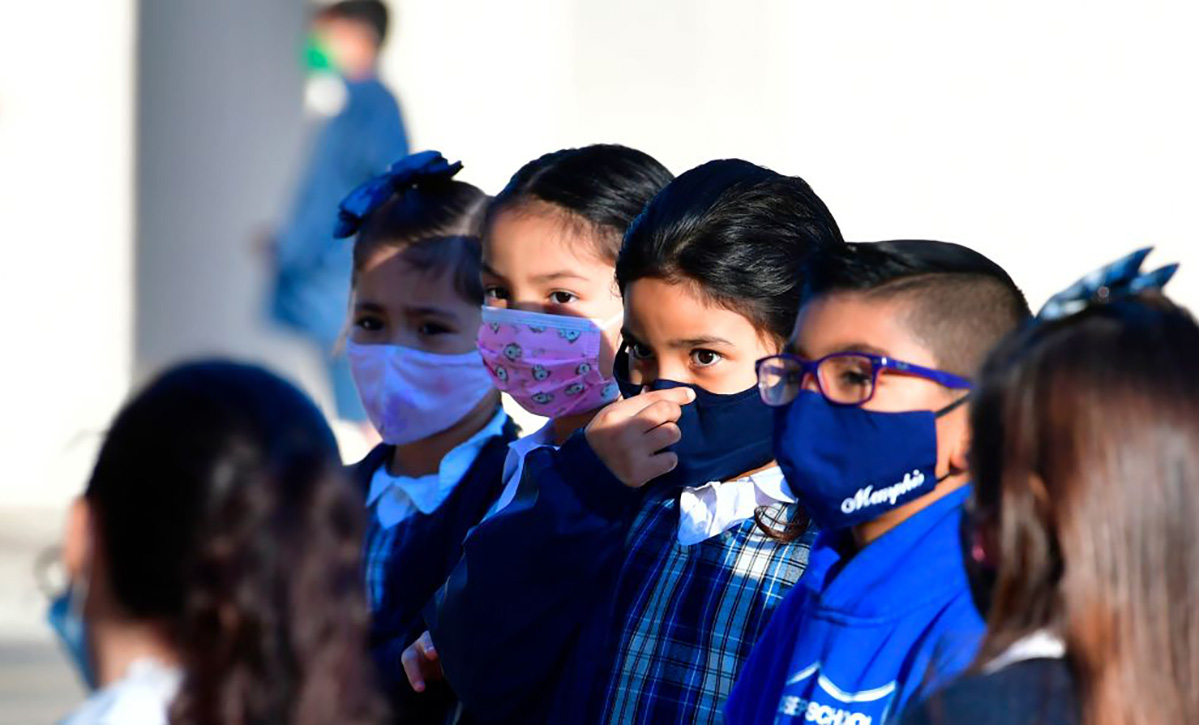7 Things We Learned About COVID’s Impact on Education From Survey of 800 Schools
A series of surveys sent between January and May reveal how the pandemic has shaped absenteeism, student behavior, mental health and staffing problems

Get stories like these delivered straight to your inbox. Sign up for The 74 Newsletter
The pandemic years have taken a dramatic toll on the nation’s public schools, according to data from the Institute of Educational Sciences, affecting staffing, students’ behavior, attendance, nutrition, and mental health.
“There was a lot of disruption in actually providing quality instruction to students whether it is access to a teacher, a live teacher, or the mode of learning was chaotic and vacillating, and it varied by race and ethnicity,” said Commissioner Peggy Carr of the National Center for Education Statistics, an arm of the institute. “This is an important way to understand the impact of the pandemic on our country.”
The School Pulse Panel is a series of surveys from January 2022 through May 2022 measuring COVID-19’s impact on public education. The surveys were sent to 800-850 public schools, with principals, administrators, superintendents, and staff responding. Here are some takeaways from IES’s School Pulse Panel:
1. COVID-19 negatively affected student’s development
A May 2022 survey found more than 80% of public schools reported “stunted behavioral and socioemotional development” in their students because of the COVID-19 pandemic,” a 56% increase in “classroom disruptions from student misconduct,” and a 49% increase in “rowdiness outside of the classroom.” All schools surveyed reported a 55% increase in “student tardiness.” The use of cell phones, computers, or other electronics when not permitted for all schools increased by 42%.
2. Chronic teacher and student absenteeism has increased
Student and teacher absenteeism in the 2021-2022 school year increased in comparison to school years before the COVID-19 pandemic. In the 2021-2022 school year 61% of public schools also reported it is “much more difficult” to find substitute teachers; and that
- 74% reported having “administrators cover classes.”
- 71% reported having “non-teaching staff cover classes.”
- 68% reported having “other teachers cover classes during their prep periods.”
- 51% reported “separate sections and classes… combined into one room.”
Carr said she had heard from colleagues in Boston and Florida school districts that because of staffing shortages, superintendents had to return to classrooms to teach “because it was so bad. I had heard that, but to see it in a nationally representative sample of schools that prevalent, is sobering.”
Carr also said COVID quarantines are a factor in student absenteeism. “It is normal to have students out because of quarantine, so when we talk about student absenteeism, it’s not all just because a student is just out, sometimes it is that they’ve been quarantined because of COVID,” she said. “That’s part of the new normal.”
3. There is a greater need for mental health services among students and staff.
70% of public schools reported that “the percentage of students who have sought mental health services increased since the start of the COVID-19 pandemic;” and that 34% of public school students seeking out mental health services more than others were “economically disadvantaged students.” The second highest percentage (25%) of public schools who sought out mental health services more than others were special needs students (25%).
“The teachers are having a rough time…too, is what these data are showing,” Carr said. 29% of public schools reported that the “degree to which staff have sought mental health services from the school since the start of COVID-19” has increased. “They are overworked, they don’t have the staff there to help them, teachers are quitting. They are having to teach courses they have not taught before. All of these things culminate into an unhealthy work environment for the teachers,” she said.
4. Public schools face barriers to getting students the mental health services they need.
Most public schools (61%) said a limitation was “insufficient mental health professional staff coverage to manage caseload,” 57% of the schools said it was “inadequate access to licensed mental health professionals,” and 48% said “inadequate funding.”
“A licensed professional is expensive,” Carr said. “Too few professionals are available in these schools to actually provide those services and inadequate access to licensed professionals that can really provide the level of quality of services that they need.”
5. Schools changed their calendars to support students and staff
Nearly one third of the schools — 28% — surveyed reported making changes to their “daily or yearly academic calendar to mitigate potential mental health issues for students and staff.” In early July, a California law went into effect to make high school and middle classes start no earlier than 8:30am. New Jersey, New York, and Massachusetts lawmakers have had similar discussions about making school start times later.
6. Most schools are in-person
By May 2022, most schools — 99% — were offering full-time in-person instruction, a slight increase from January when it was 97%, the survey found. In January, 40% of all public schools also offered a full-time remote option, which decreased to 34% in February, 33% in March, April, and May, the survey found.
7. School Breakfast and Meal Programs faced challenges.
Nearly 40% of the schools that operate USDA school and breakfast meal programs, “reported challenges obtaining enough food, beverages, and/or meal service supplies.” The top three most reported reasons for these challenges were “limited product availability,” “shipment delays,” “orders arriving with missing items, reduced quantities, or product substitutions.”
“I think we are continuing to be surprised by the range of experiences that schools are having to deal with as a result of COVID. It hasn’t subsided,” Carr said. “It is not over yet is what I believe these data are saying.”
Get stories like these delivered straight to your inbox. Sign up for The 74 Newsletter

;)

